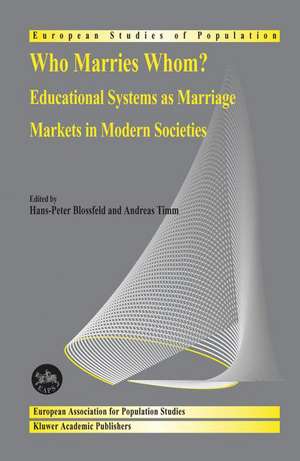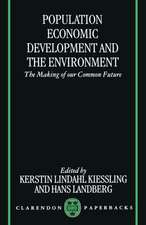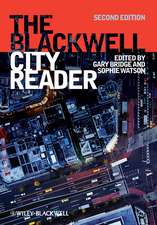Who Marries Whom?: Educational Systems as Marriage Markets in Modern Societies: European Studies of Population, cartea 12
Editat de Hans-Peter Blossfeld, A. Timmen Limba Engleză Hardback – 31 dec 2003
| Toate formatele și edițiile | Preț | Express |
|---|---|---|
| Paperback (1) | 947.50 lei 6-8 săpt. | |
| SPRINGER NETHERLANDS – 31 dec 2003 | 947.50 lei 6-8 săpt. | |
| Hardback (1) | 953.65 lei 6-8 săpt. | |
| SPRINGER NETHERLANDS – 31 dec 2003 | 953.65 lei 6-8 săpt. |
Din seria European Studies of Population
-
 Preț: 231.11 lei
Preț: 231.11 lei - 15%
 Preț: 644.49 lei
Preț: 644.49 lei - 18%
 Preț: 952.57 lei
Preț: 952.57 lei - 18%
 Preț: 951.47 lei
Preț: 951.47 lei - 18%
 Preț: 957.44 lei
Preț: 957.44 lei - 15%
 Preț: 640.88 lei
Preț: 640.88 lei - 24%
 Preț: 799.81 lei
Preț: 799.81 lei - 18%
 Preț: 960.78 lei
Preț: 960.78 lei - 15%
 Preț: 635.80 lei
Preț: 635.80 lei - 15%
 Preț: 649.06 lei
Preț: 649.06 lei -
 Preț: 395.25 lei
Preț: 395.25 lei - 18%
 Preț: 951.29 lei
Preț: 951.29 lei - 18%
 Preț: 895.27 lei
Preț: 895.27 lei -
 Preț: 393.35 lei
Preț: 393.35 lei - 15%
 Preț: 593.91 lei
Preț: 593.91 lei - 15%
 Preț: 644.49 lei
Preț: 644.49 lei -
 Preț: 415.18 lei
Preț: 415.18 lei - 18%
 Preț: 946.10 lei
Preț: 946.10 lei - 15%
 Preț: 640.88 lei
Preț: 640.88 lei - 18%
 Preț: 951.29 lei
Preț: 951.29 lei - 15%
 Preț: 643.34 lei
Preț: 643.34 lei - 20%
 Preț: 554.98 lei
Preț: 554.98 lei -
 Preț: 383.12 lei
Preț: 383.12 lei -
 Preț: 383.12 lei
Preț: 383.12 lei - 15%
 Preț: 580.79 lei
Preț: 580.79 lei
Preț: 953.65 lei
Preț vechi: 1162.99 lei
-18% Nou
Puncte Express: 1430
Preț estimativ în valută:
182.48€ • 191.21$ • 150.85£
182.48€ • 191.21$ • 150.85£
Carte tipărită la comandă
Livrare economică 11-25 aprilie
Preluare comenzi: 021 569.72.76
Specificații
ISBN-13: 9781402016820
ISBN-10: 1402016824
Pagini: 360
Ilustrații: XII, 342 p.
Dimensiuni: 170 x 244 x 25 mm
Greutate: 0.68 kg
Ediția:2003
Editura: SPRINGER NETHERLANDS
Colecția Springer
Seria European Studies of Population
Locul publicării:Dordrecht, Netherlands
ISBN-10: 1402016824
Pagini: 360
Ilustrații: XII, 342 p.
Dimensiuni: 170 x 244 x 25 mm
Greutate: 0.68 kg
Ediția:2003
Editura: SPRINGER NETHERLANDS
Colecția Springer
Seria European Studies of Population
Locul publicării:Dordrecht, Netherlands
Public țintă
ResearchCuprins
1 Educational Systems as Marriage Markets in Modern Societies: A Conceptual Framework.- 2 Who Marries Whom in West Germany?.- 3 Who Marries Whom in Flemish Belgium?.- 4 Who Marries Whom in France?.- 5 The When and Whom of First Marriage in The Netherlands.- 6 Who Marries Whom in Italy?.- 7 Who Marries Whom in Spain?.- 8 Who Marries Whom in Great Britain?.- 9 Who Marries Whom in the United States?.- 10 Who Moves Together with Whom in Denmark?.- 11 Who Marries Whom in Sweden?.- 12 Who Marries Whom in Hungary?.- 13 Who Marries Whom in Slovenia?.- 14 Two Decades of Educational Intermarriage in Israel.- 15 Assortative Mating in Cross-National Comparison: A Summary of Results and Conclusions.
Recenzii
From the reviews:
"The consequences of educational equality and inequality in marriage have so far never been studied. This book breaks new ground, showing that rising levels of homogamy entail increasing inequality between households in modern societies. This landmark study will stimulate a new stream of research on the social and economic impact of educational (in)equality in marriage."
(Catherine Hakim, London School of Economics)
"The rising enrollment in higher education, especially of women, has not only led to a postponement of marriage but also increased the importance of the educational system as a place to meet and find a (marriage) partner. Since education is the most influential factor for peoples' later job careers and income attainment, increasing rates of educational assortative mating leads to a wider spread in households' income distribution. For the first time, this book studies the long-term process of assortative mating over the life course for thirteen modern industrialized countries, beginning from a pool of eligibles up to the point where they marry a partner of equal, higher or lower educational status.With increasing duration in school, the rate of homogenous marriages rises, and after the transition from school to work more heterogonous environments account for the fact of less homogeneity in later marriages. The book also shows that social origin matters especially for women: In most countries educationally upward mobile women are very likely to marry downward. The changing role of the educational system as a marriage market in the course of educational expansion and women's changing economic roles in the labor market and the family are the main driving forces behind this development. Using event history methods, the book compares the processes of assortative mating in the various European societies, in Israel and the USA, and points out communalities and differences in the mechanisms."
(Wolfgang Teckenberg, University of Heidelberg )
"The consequences of educational equality and inequality in marriage have so far never been studied. This book breaks new ground, showing that rising levels of homogamy entail increasing inequality between households in modern societies. This landmark study will stimulate a new stream of research on the social and economic impact of educational (in)equality in marriage."
(Catherine Hakim, London School of Economics)
"The rising enrollment in higher education, especially of women, has not only led to a postponement of marriage but also increased the importance of the educational system as a place to meet and find a (marriage) partner. Since education is the most influential factor for peoples' later job careers and income attainment, increasing rates of educational assortative mating leads to a wider spread in households' income distribution. For the first time, this book studies the long-term process of assortative mating over the life course for thirteen modern industrialized countries, beginning from a pool of eligibles up to the point where they marry a partner of equal, higher or lower educational status.With increasing duration in school, the rate of homogenous marriages rises, and after the transition from school to work more heterogonous environments account for the fact of less homogeneity in later marriages. The book also shows that social origin matters especially for women: In most countries educationally upward mobile women are very likely to marry downward. The changing role of the educational system as a marriage market in the course of educational expansion and women's changing economic roles in the labor market and the family are the main driving forces behind this development. Using event history methods, the book compares the processes of assortative mating in the various European societies, in Israel and the USA, and points out communalities and differences in the mechanisms."
(Wolfgang Teckenberg, University of Heidelberg )














